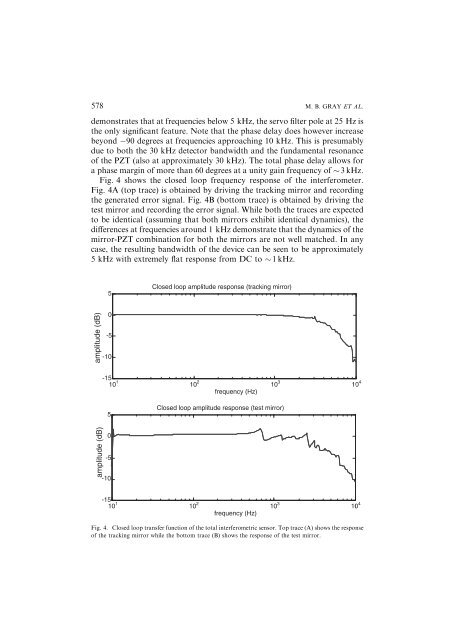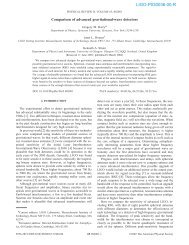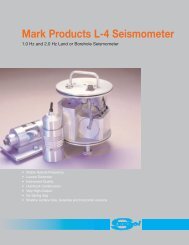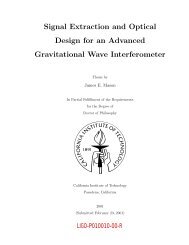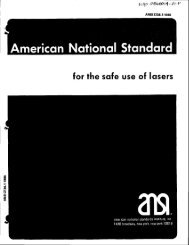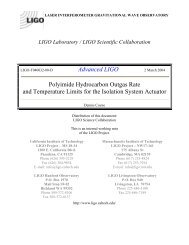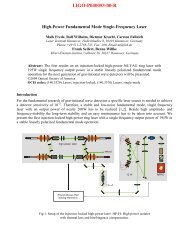A simple high-sensitivity interferometric position sensor for - LIGO ...
A simple high-sensitivity interferometric position sensor for - LIGO ...
A simple high-sensitivity interferometric position sensor for - LIGO ...
Create successful ePaper yourself
Turn your PDF publications into a flip-book with our unique Google optimized e-Paper software.
578 M. B. GRAY ET AL.<br />
demonstrates that at frequencies below 5 kHz, the servo ®lter pole at 25 Hz is<br />
the only signi®cant feature. Note that the phase delay does however increase<br />
beyond 90 degrees at frequencies approaching 10 kHz. This is presumably<br />
due to both the 30 kHz detector bandwidth and the fundamental resonance<br />
of the PZT (also at approximately 30 kHz). The total phase delay allows <strong>for</strong><br />
a phase margin of more than 60 degrees at a unity gain frequency of 3 kHz.<br />
Fig. 4 shows the closed loop frequency response of the interferometer.<br />
Fig. 4A (top trace) is obtained by driving the tracking mirror and recording<br />
the generated error signal. Fig. 4B (bottom trace) is obtained by driving the<br />
test mirror and recording the error signal. While both the traces are expected<br />
to be identical (assuming that both mirrors exhibit identical dynamics), the<br />
di€erences at frequencies around 1 kHz demonstrate that the dynamics of the<br />
mirror-PZT combination <strong>for</strong> both the mirrors are not well matched. In any<br />
case, the resulting bandwidth of the device can be seen to be approximately<br />
5 kHz with extremely ¯at response from DC to 1 kHz.<br />
Fig. 4. Closed loop transfer function of the total <strong>interferometric</strong> <strong>sensor</strong>. Top trace (A) shows the response<br />
of the tracking mirror while the bottom trace (B) shows the response of the test mirror.


